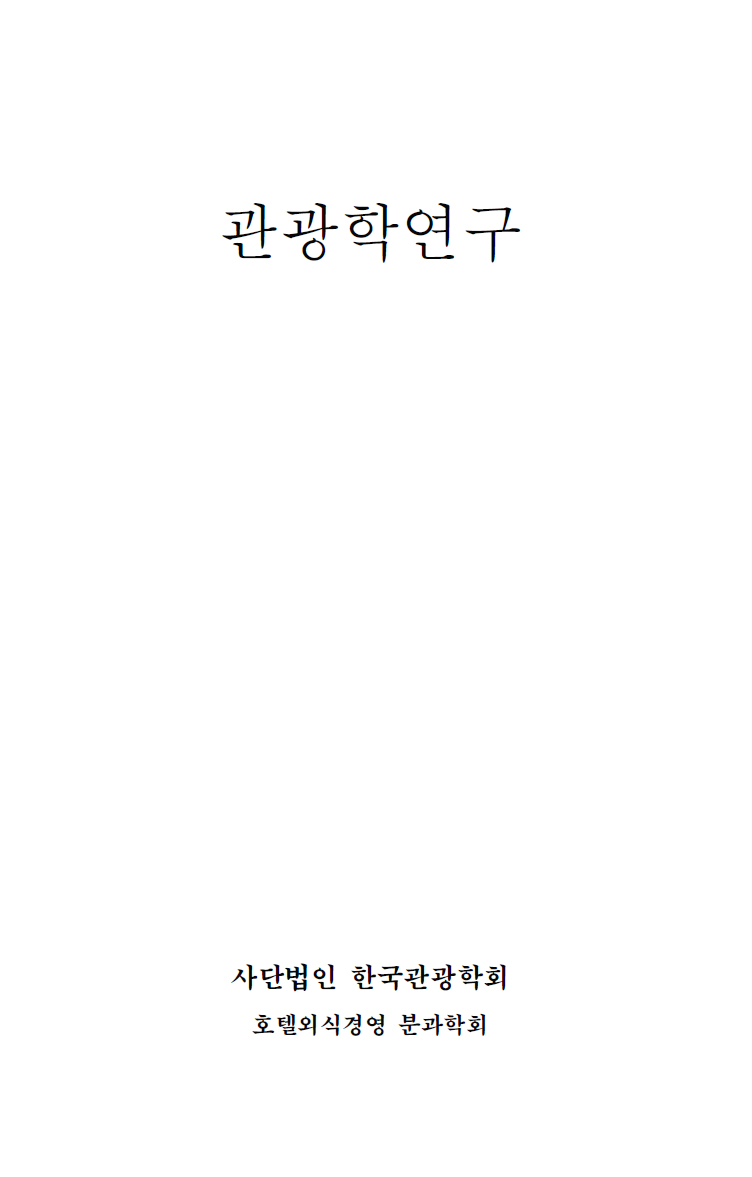본 연구는 결혼을 통하여 한국으로 삶의 거처를 옮긴 결혼이주여성을 대상으로 음식문화의 적응 유형을 분류하여 유형별 특성과 한식확산 단계의 영향 관계에 대하여 살펴보고자 하였다. Berry(1997)의 문화적응척도와 Rogers(2003)의 개혁결정단계를 바탕으로 개발된 한경수 외(2013)의 한식확산 단계 평가 지표를 활용하여 결혼이주여성의 음식문화 적응 유형 및 한식확산 단계를 측정하였다. 연구는 2014년 09월 15일부터 11월 13일까지 60일간 다문화지원센터에서 교육프로그램을 수강하는 결혼이주여성을 대상으로 실시하였으며, 총 109부의 유효 표본을 본 연구의 실증분석에 사용하였다. 연구결과 첫째, 결혼이주여성의 음식문화적응은 ‘통합’ 38.5%(42명), ‘동화’ 12.8%(14명), ‘분리’ 28.4%(31명), ‘주변화’ 20.2%(22명)로 분류되었으며 음식문화적응 유형별 특성은 연령과 거주기간에 따라 차이가 있는 것으로 나타나, 결혼이주여성의 음식문화적응 유형에 따른 적응 연구와 교육프로그램이 필요할 것이라 사료되었다. 둘째, 결혼이주여성의 음식문화적응 유형별 한식확산 단계는 ‘인지흥미(3.82)’가 가장 높았으며, 그 다음 ‘흥미평가(3.44)’, ‘시도적응(3.14)’ 순으로 나타났으며, 음식문화적응에 따른 한식확산 단계의 영향 관계에서는 ‘한국음식지향’에서만 유의한 영향을 미치는 것으로 나타났다. 따라서 결혼이주여성이 한국음식문화에 적응하고 수용하기 위해서는 한국음식문화에 대한 다양한 경험이 필요할 것이라 사료되었다.
This study was conducted on married female immigrants who have moved to Korea. After classifying the food acculturation types, the following were identified their characteristics by their adaptation type correlation between the food acculturation and Korean food diffusion. The results obtained are as follows: First, the food acculturation types of married female immigrants were classified as ‘integration’ 38.5%(42persons)’, ‘assimilation’ 12.8% (14persons), ‘separation’ 28.4%(31persons), ‘marginalization’ 20.2%(22persons). Those types showed differences depending on their age and period of stay in Korea. Thus, studies and educational programs based on the Korean food acculturation types of married female immigrants are necessary. Second, the Korean food diffusion stage by the adaptation type of married female immigrants was the highest in ‘awareness interest(3.82),’ followed by ‘interest evaluation(3.44)’, ‘trial adaptation(3.14).’ In terms of the correlation between Korean food diffusion stage and food acculturation types, significant effects were found in ‘Korean food acculturation’ only. For married female immigrants to adapt to the Korean food culture and accept it as residents, diverse experience in the food culture is necessary.
I. 서론
II. 이론적 고찰
III. 연구방법
IV. 분석결과
V. 논의 및 결론
참고문헌
(0)
(0)
